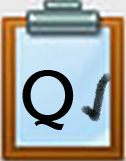Q3 Web Site Evaluation: CRAAP
CRAAP TEST
You will evaluate the resources you have found to determine if your information is accurate and up-to-date.
Step 1. Read the information from Benedictine University Library Research Guides. Many librarians promote the CRAAP Test to teach students how to evaluate resources. It is most often used to evaluate websites, but the same criteria can also be applied to other types of resources.
- Currency - the timeliness of information
- Relevance - the importance of the information for your needs
- Authority - the source of the information
- Accuracy - the reliability, truthfulness, and correctness of the content
- Purpose - the reason the information exists
Step 2. Play the video below that describes the CRAAP Test.
CRAAP Test to Evaluate Sources
Direct link (2:35 min.)
Step 3. Using the CRAAP Test, evaluate the resources you found using Google and a MeL database. Complete the assignment using the document from Step Two on the previous page.
Competencies & Standards
MITECS Michigan Integrated Technology Competencies for Students, and
1. Empowered Learner
a. Articulate and set personal learning goals, develop strategies leveraging technology to achieve them and reflect on the learning process itself to improve learning outcomes
b. Build networks and customize their learning environments in ways that support the learning process
2. Digital Citizen
b. Engage in positive, safe, legal and ethical behavior when using technology, including social interactions online or when using networked devices
c. Demonstrate an understanding of and respect for the rights and obligations of using and sharing intellectual property
3. Knowledge Constructor
a. Plan and employ effective research strategies to locate information and other resources for their intellectual or creative pursuits
b. Evaluate the accuracy, perspective, credibility and relevance of information, media, data or other resources
c. Curate information from digital resources using a variety of tools and methods to create collections of artifacts or solving authentic problems
Websites and Documents
Websites
Videos from Outside Sources




